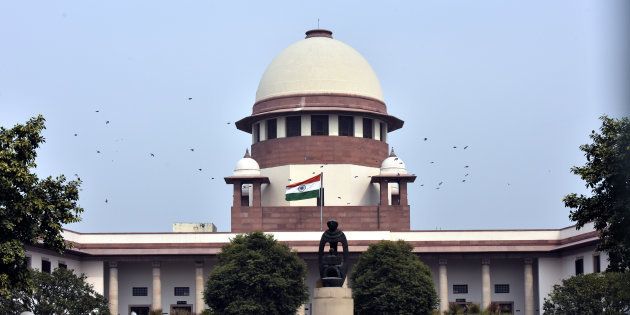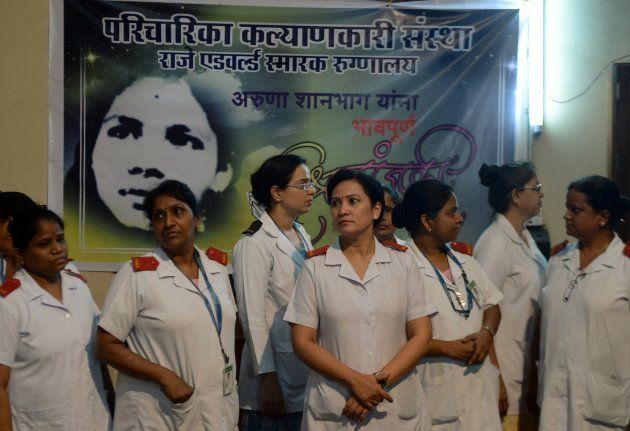
From the makers of 'privacy is a fundamental right' comes 'right to die with dignity is a fundamental right'.
A five judge constitution bench of the Supreme Court on Friday, in a writ petition filed by Common Cause, unanimously (albeit with four separate concurring judgments) held that the right to die with dignity is a component of the right to life under Article 21 of the Constitution. In doing so, the apex court has decided that there is no requirement of a legislation to legalise passive euthanasia, a form of euthanasia which allows for withdrawal of life support for terminally ill patients living a life of pain, and patients who are in a permanent vegetative state with no chance for revival. The judgment was a consequence of a reference from a three judge bench which referred the matter to the Constitution bench to determine the correctness of two previous judgments of the Supreme Court.
The operative judgment, written by the Chief Justice Dipak Mishra and Justice A.M. Khanwilkar, has legalized living wills or, as they chose to call it, advance directives. It is a set of written instructions given by people to provide for a situation where the person is in a vegetative state or terminally ill with no chance of recovery or revival. The living will, or advance directive, would specifically instruct next of kin and medical professionals to not revive or allow for passive euthanasia in such situations. Doctors allowing passive euthanasia on the basis of advance directives no longer need to live in fear of legal action against them. Advance directives derive its sanctity from the fact that it is executed at a time when the person is mentally competent to issue such instructions, which they would otherwise be unable to in a vegetative or terminal state.
In doing the above, the Supreme Court has held that the right of the individual to die with dignity takes precedence over the interest of the State in preserving the sanctity of life.
The right of the individual to die with dignity takes precedence over the interest of the State in preserving the sanctity of life.
The judgment has overruled the aspect of the famous Aruna Shanbaug judgment where it found that the mechanism of passive euthanasia can only be provided for through legislation. However, the Supreme Court itself has provided guidelines for advance directives and passive euthanasia. The Court held that advance directives can only be issued by adults of sound minds with informed consent which should be free of coercion. It further provides that the advance directives must be clear, specific and unambiguous. It also allows for a person to nominate a next of kin to provide consent for passive euthanasia in case the persons themselves are incapable of doing so.
As a further safeguard, the Court has mandated that the written document must be signed and witnessed by at least two persons. The advance directive would also require the signature of a Judicial Magistrate (First Class) who has to satisfy himself that all the requirements of executing the advance directive have been fulfilled.
Advance directives can be acted upon by a doctor with due regard to and after affirmation of the patient's terminal or vegetative state. Doctors are also required to verify the authenticity of advance directives from the Judicial Magistrate before acting upon the same. The doctor must then inform the guardian or close relatives of the patient and apprise them of the prognosis and the status of treatment, including his belief that the advance directives need to be acted upon.

Thereafter, the hospital where the patient is admitted is required to constitute an appropriate medical board to assess the patient's condition and provide their preliminary opinion. If the preliminary opinion is that the advance directive needs to be acted upon, the said opinion has to be forwarded to the District Collector. The District Collector in turn has to convene another medical board to visit the patient and to provide its opinion whether advance directive needs to be acted upon or not. If the second medical board concurs with the preliminary opinion then the same is then forwarded to the Judicial Magistrate (First Class) of that jurisdiction to confirm the same. The Magistrate then must visit the patient and give his final approval for execution of advance directives and approve the same. The patient however has the power to revoke advance directives at any time before it's acted upon. A refusal by a medical board to act upon advance directives can be challenged before the appropriate High Court by way of a writ petition. The High Court would be free to constitute its own medical board and decide the issue expeditiously with the patient's best interests in mind.
The Supreme Court has extended the above mechanism even to cases where there are no advance directives, thus providing for passive euthanasia in the absence of a living will, with similar safeguards as provided above.
In doing so, the Court has rejected the finding in Aruna Shanbaug's case that mandated legislation to provide for passive euthanasia. The basis for this finding is the individual's right to self determination and autonomy, which includes a right to a life with dignity. To live with dignity also includes a right to die with dignity, held the Supreme Court. The Court has left the door open for an appropriate legislation for passive euthanasia, with the judgment to hold forth in the interim.
To live with dignity also includes a right to die with dignity, held the Supreme Court.
The Supreme Court has judged the question whether right to life includes right to a dignified death based on both legal as well as moral tests. Also, the Court has relied extensively of the recent judgment on the right to privacy on the aspect of right to dignity.
Justice A.K. Sikri in his concurring opinion says, "The opportunity to die unencumbered by the intrusion of medical technology and before experiencing loss of independence and control, appears to many to extend the promise of a dignified death. When medical technology intervenes to prolong dying like this it does not do so unobtrusively." He further says, "A dreadful, painful death on a rational but incapacitated terminally ill patient are an affront to human dignity". Justice Sikri has also discussed the 'economics of euthanasia' and held that "...under certain circumstances, i.e. when the patient is in a PVS or braindead/clinically dead, at least passive euthanasia would even be ethically acceptable, on the application of doctrine of dignity. In such a situation, the economic considerations would strengthen the aforesaid conclusion".
According to Justice D.Y. Chandrachud, "Dignity is the core value of life and personal liberty which infuses every stage of human existence. Dignity in the process of dying as well as dignity in death reflects a long yearning through the ages that the passage away from life should be bereft of suffering".In relying on the judgment on the right to privacy, the Court held that, "The right to privacy protects autonomy in making decisions related to the intimate domain of death as well as bodily integrity."
In summation, we now have a choice of destiny inherent in our right to live and die with dignity.
Also On HuffPost:
